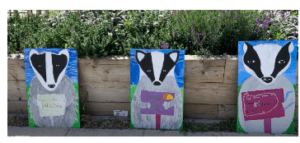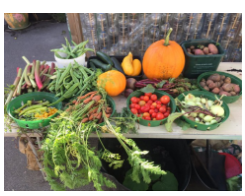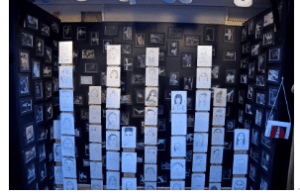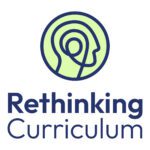Brocklewood Primary School: How does our location drive curriculum choices?

This article has been published as part of the Rethinking Curriculum project, kindly funded by The Helen Hamlyn Trust.
Siobhan Dell, Assistant Headteacher at Brocklewood Primary School
Context
Brocklewood Primary school is situated in the centre of Nottingham city. Leaders and teachers at the school are highly fortunate to serve a rich, diverse community of approximately five hundred pupils, of which fifty per cent have English as an additional language. The school opened in 2012 and leaders focused on ensuring consistency in teaching and learning, staffing and children’s outcomes. After gaining stability, discussions around curriculum re-design and implementation became a high priority for the senior leadership team. More recently, the revised education inspection framework (EIF) (OfstedThe Office for Standards in Education, Children’s Services and Skills – a non-ministerial department responsible for inspecting and regulating services that care for children and young people, and services providing education and skills, 2019) ensured an increased focus on curriculum. At Brocklewood Primary school, leaders welcomed this reset on curriculum design. Of course, it was important to identify key concepts in the curriculum, supporting knowledge to stick, progressively map out substantive and disciplinary knowledge for teachers and offer strong and focused professional development (Willingham, 2009). However, as well as this, leaders believed it was imperative to consider the locality of the school, the challenges and opportunities that arise from living on a Nottingham estate and what pupils living there would need in their curriculum to make a meaningful contribution to society.
Starting point
Leaders at the school have always been outward-looking – visiting other schools across the country gave them an idea of how others were successfully implementing a place-based approach. School visits that were particularly inspiring were those where the children seemed deeply invested in the learning experiences and could cite the impact it was having on their personal development. After reflecting on this and engaging with reading the Oxfam Global Citizenship guides for schools (2015), leaders began to construct the curriculum with the following key questions at the centre of their thinking:
- What knowledge do our pupils need to make a contribution to society at a local, national and global level?
- What knowledge and skills do our pupils need to be given to thrive in the 21st century?
Sir Tim Brighouse (in Myatt, 2021) states that at the heart of school improvement is teachers and leaders talking about teaching and learning. An important starting point when considering our key questions was to spend time talking to subject leaders at a careful pace to unpack the curriculum coverage versus our children’s needs. This diagram (Figure 1) supported these discussions:
Figure 1: Discussion prompt for place-based curricular approach

Following these discussions, the senior leadership team began to design the improved curriculum. Within this curriculum, our children are exposed to a vast range of learning experiences:
- Children in Key Stage 1 learn about history within living memory through building intergenerational relationships that includes a volunteering programme with the local care home.
- Children in Key Stage 2 learn about healthy relationships with a local support group (The Great Project by Equation). Children take the tram to another school to share the information and reflections on what they have learnt.
- Children learn about sustainability, such as how to design and build a space in the community garden to encourage biodiversity using science and technology (See Figure 2). The community garden is in very close proximity to the school. Children across the school use it as a learning environment.
Figure 2: Children’s artwork themed around sustainable development and climate change.

There are a huge range of learning experiences, but all projects have been designed with these consistent themes:
- Wider curriculum subjects are taught through half-termly projects
- All projects have a community-based project outcome
- Subjects are taught explicitly and substantive and disciplinary knowledge is mapped out progressively, supporting teachers in what knowledge to teach and curriculum coverage
- Local links and partnerships are made wherever possible to enrich and enhance the curriculum offer
- Teams of teachers plan together: planning discussions and dialogue are considered to be highly important for lesson design.
Collaboration is key: from working with local partners, community-based outcomes to a shared planning approach.
Examples of curriculum projects
1. Teaching Geography through the theme of economic inequality
It is reported that Nottingham City Council spends approximately £22,000 a day housing homeless people in bed and breakfasts and hotels as the council struggles with rising demand (Locker and Noble, 2023). In this project, learners in Upper Key Stage 2 study the issue of homelessness and inequality in the city, making community links with local support centres and foodbanks. Children analyse a variety of political views and take part in a debate with a local MP around how they try to tackle homelessness, the cost of living and poverty in Nottingham. Children analyse the assumptions and prejudices that exist about homelessness, the risk factors and how the main religions and support groups tackle vulnerable groups in crisis in our city.
Community project outcome: Learners set up a cost-of-living event for the community (See Figure 3), including sharing low-cost healthy food.
Local Partnerships: Emmanuel House community support centre for people who are at risk of being homeless; The Hope Centre Food Bank, Broxtowe Estate; Trent Vineyard Church, Nottingham.
Figure 3: A low-cost healthy living event for our community – ‘Pop-up soup kitchen’. All food is grown in the school grounds.

2. Teaching Geography through the theme of migration and displacement
The Art of Belonging report (McIntyre, 2022) states that almost half of the world’s forced migrants are children under the age of 18. Furthermore, young, often unaccompanied, forced migrants arrive in cities such as Nottingham in the hope of a better life but find themselves at risk of higher rates of poor mental health and isolation. The report found that there is a distinctive signature pedagogy underpinning the ways in which artists and cultural programmes can work successfully with young new arrivals who face considerable challenges as they try to learn to adapt to life in their new context. The report has been a motivation to leaders in the design of an art curriculum with themes of identity, diversityThe recognition of individual differences in terms of race, ethnicity, gender, sexual orientation, socio-economic status, physical ability, religious beliefs and other differences and belonging as golden threads.
The art enriched the geography project where children in Years 3 and 4 gain knowledge of migration, including push and pull factors. They begin to understand the causes and effects of modern-day conflicts and the challenges that migrants face in Nottingham as they aim to build connections with their new place yet stay true to their ideals and principles.
Community Project Outcome: Art exhibition inspired by The Art of Belonging project, showcasing work to parents.
Local links/ Partnerships: The Art of Belonging Social integration of young migrants in urban contexts through cultural place making. University of Nottingham; New Art Exchange Gallery (See Figure 4), Nottingham; challeNGe Cultural Rucksack, Nottingham
Figure 4: A whole school art exhibition theme ‘Identity and Diversity’ inspired by artist Phoebe Boswel’s exhibition at New Art Exchange, Nottingham. Children created self portraits with the phrase ‘I am…’ .

Impact
The school’s curriculum is commended on the impact it has on children gaining knowledge about the world around them, and also how the learning impacts character and personal development. A recent curriculum evaluation from external reviews found the school plays an important role in giving the community a sense of worth. Parents love to come into school to see their child’s project outcomes. When talking with pupils, it becomes clear as to how well staff encourage pupils to achieve and feel proud. Examples include:
- Pupils could give clear examples of how the learning supports their understanding of how they can impact positively on the wider world, ‘I can talk to the government, to the builders to try to stop building so many buildings as this is impacting endangered animals. I can protest and put posters up. I have adopted an endangered animal.’ (Year 4 pupil)
- Pupils could explain how working with local community partners was impacting on their understanding of local issues, ‘My view of the police has been they help Nottinghamshire be the best that it can be. Some people may think the police stop crimes but that’s not all of it, it is about safety. I would like to be a police officer.’ (Year 5 pupil)
- Children have clear visions of what they want to be when they grow up and the impact it will have – ‘I want to be a scientist so I can make the world a better place. I want to make a machine that picks up litter. We have learnt about littering and pollution and we are kind of still learning it because we are learning about endangered animals.’ (Year 4 pupil)
Leaders believe that the community projects enable pupils to create work that is honoured with a clear purpose and audience. This kind of work has been championed by Ron Berger (2013), who argues that it is possible to meet standards and create authentic work:
‘Once a pupil creates work of value for an authentic audience beyond the classroom – work that is sophisticated, accurate, important and beautiful – that student is never the same. When you have done quality work, deeper work, you know you are always capable of doing more.’
Further reading:
Carpenter R (2018) A Manifesto for Excellence in Schools. London: Bloomsbury
Myatt M (2006) Hopeful Schools: Building humane communities. Mary Myatt Learning Limited.
Myatt M (2002) Beautiful work. Available at: www.marymyatt.com/blog (accessed 20 May 2024).
Sherrington T (2017) The Learning Rainforest. Woodbridge: John Catt Educational.
References
Berger R (2013) Deeper learning: Highlighting student work. Available at: www.edutopia.org/blog/deeper-learning-student-work-ron-berger. (accessed 20 May 2024)
Locker J and Noble S (2023) Nottingham homelessness crisis won’t change without help, says charity. Available at: https://www.bbc.com/news/uk-england-nottinghamshire-67084522 (accessed 7 June 2024)
ChallengeNottingham (2022) Nottingham’s Cultural Rucksack. Available at: https://challengenottingham.co.uk/cultural-rucksack (accessed 21 May 2024)
Equation (2022) The Great Project toolkits for schools. Available at wwww.equation.org.uk/toolkits (accessed 27 May 2024)
McIntyre J (2022) The Art of Belonging: Social integration of young migrants in urban contexts through cultural place-making. Available at: www.nottingham.ac.uk/research/groups/cracl/documents/art-of-belonging.pdf (accessed 20 July 2023)
Myatt M and Tomsett J (2021) Huh Curriculum conversations between subject and senior leaders. (Woodbridge: John Catt Educational)
New Art Exchange (2021) Phoebe Boswel: Here. Available at: www.nae.org.uk/event/phoebe-boswell-here/ (accessed 7 June 2024)
Nottinghamshire Police (2023). Mini Police. Available at: www.nottinghamshire.police.uk/news/nottinghamshire/news/news/2023/july/mini-police-sessions-hailed-a-success-as-perceptions-are-changed/ (accessed 7 June 2024)
Oxfam (2015) Education for global citizenship: a guide for schools. Available at: www.oxfam.org.uk/education/who-we-are/global-citizenship-guides/ (accessed 27 May 2024).
Willingham DT (2009) Why Don’t Students Like School? A Cognitive Scientist Answers Questions About How the Mind Works and What It Means for the Classroom. Jossey-Bass/Wiley.










